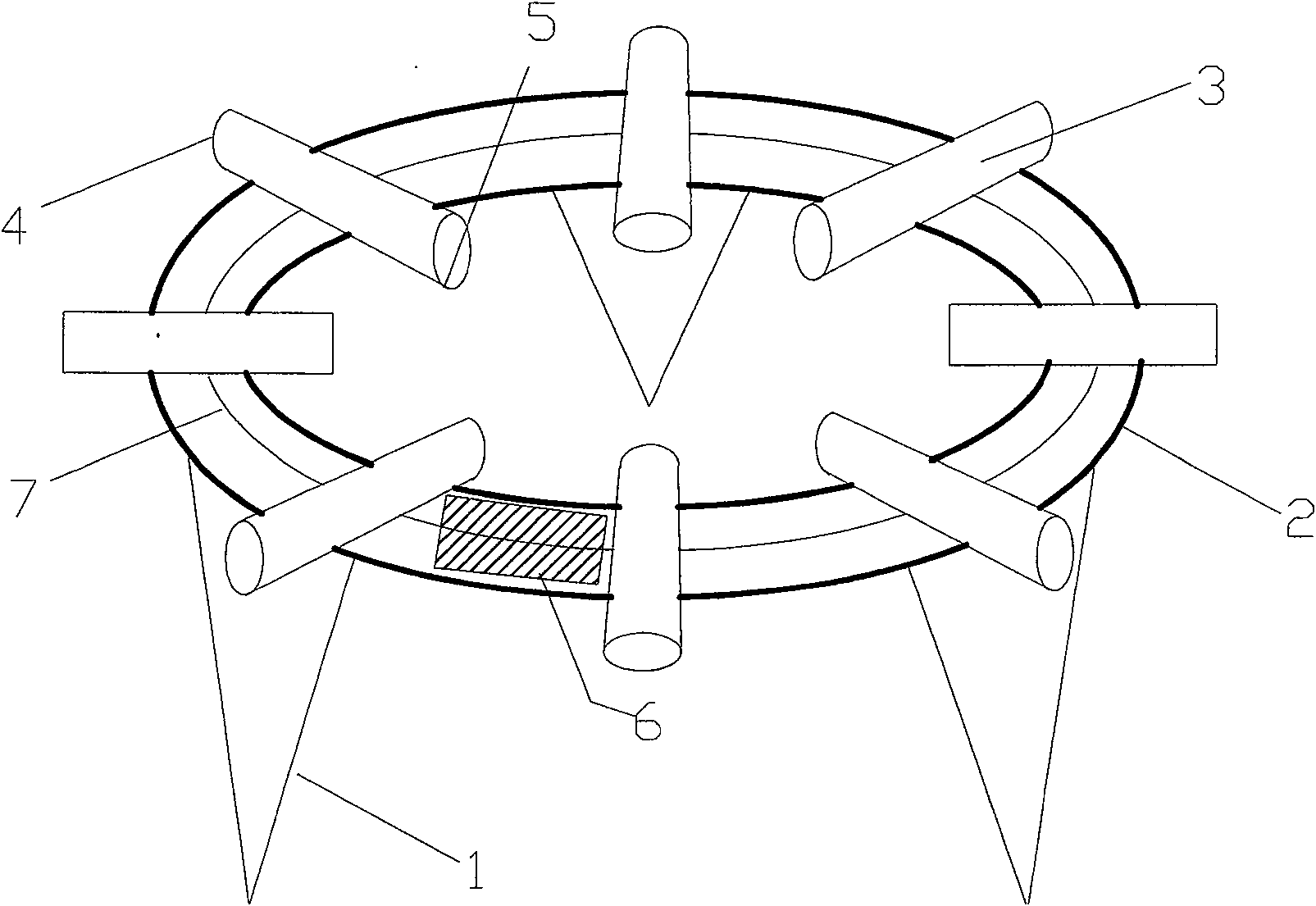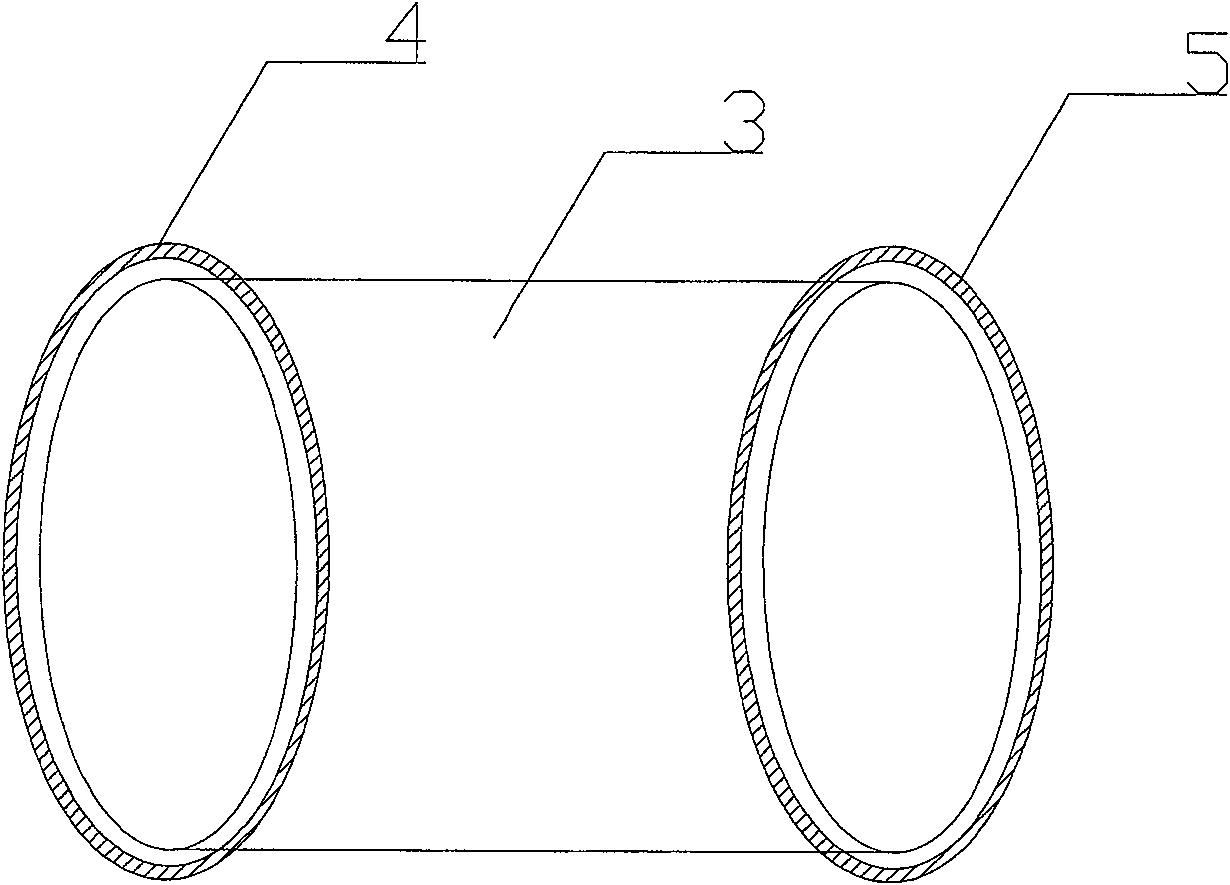Real time detector for shallow sea near bottom transport silt concentration and grain size
A real-time detection and near-bottom technology, applied in the direction of analyzing materials and instruments, can solve problems such as seabed scour or sedimentation, hazards of offshore engineering facilities, and sand traps that cannot monitor the amount of incoming sand and particle size composition in real time
- Summary
- Abstract
- Description
- Claims
- Application Information
AI Technical Summary
Problems solved by technology
Method used
Image
Examples
Embodiment Construction
[0012] like figure 1 , the present invention includes eight cylinders 3 arranged radially at 45 angle intervals fixed on the circular cavity 2, on which a concentration probe 5 and a particle size probe 4 are arranged, and via cables 7 and corresponding data The acquisition device 6 is connected, and the above-mentioned cable 7 and the corresponding data acquisition device 6 are all encapsulated in the ring cavity 2 . In this way, the above-mentioned degree and particle size distribution of the sediment passing through the device in different directions can be detected on site in real time.
[0013] like figure 2 , in order to facilitate the process, the concentration probe and the particle size probe are installed in the same ring cavity, usually at both ends of the same ring cavity, and the positions of the two can be interchanged. The above-mentioned circular cavity 2 is a metal circular cavity or a circular body bent from a plastic tube, and the cable and the data acqui...
PUM
 Login to View More
Login to View More Abstract
Description
Claims
Application Information
 Login to View More
Login to View More - R&D
- Intellectual Property
- Life Sciences
- Materials
- Tech Scout
- Unparalleled Data Quality
- Higher Quality Content
- 60% Fewer Hallucinations
Browse by: Latest US Patents, China's latest patents, Technical Efficacy Thesaurus, Application Domain, Technology Topic, Popular Technical Reports.
© 2025 PatSnap. All rights reserved.Legal|Privacy policy|Modern Slavery Act Transparency Statement|Sitemap|About US| Contact US: help@patsnap.com


